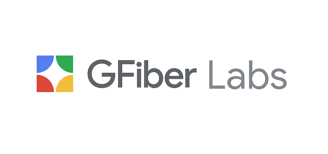Google’s GFiber Labs said at NetworkX, held last month in Paris, that it will be offering residential internet with symmetrical speeds of 20 Gig with WiFi 7 by the end of the year. The network will use Nokia’s 25G PON technology, which breaks the barrier that limits existing architectures.
Nokia’s 25G PON provides up to 10x speeds without requiring any changes to the existing fiber in the ground. GFiber uses the technology to reuse its existing optical fiber cables and active equipment deployed in their network to deliver a 20 Gig symmetrical broadband service to customers.
“We’ve already got thousands of 5 Gig and 8 Gig customers and have customers using 20 Gig in organizational settings… The age of multi-gig is here, and we’re committed to meeting that challenge,” Nick Saporito, Google Head of Product, said.
GFiber Labs was launched last month to serve as an innovation hub dedicated to developing faster internet speeds. As the inaugural GFiber Labs project, the 20 Gig network will use a custom pre-certification WiFi 7 router to bring together the most advanced technologies available. GFiber Labs said this is the first of what it hopes will be a series of announcements of higher speeds.
Last month, Google Fiber installed its 20 Gig service at the United Way of Utah County in Utah and University of Missouri-Kansas City. “We are all about moving as much data as fast as we possibly can,” said Kevin Truman, UMKC Dean of Science and Engineering. “This [20 Gig network] opened up huge possibilities for our students and our faculty. From a research standpoint, this bandwidth allowed us to do things that we could do before, enhancing our ability to do artificial intelligence, cyber security, image transfers, and video streaming.”
In the future, GFiber Labs plans to continue to push the limits on internet speeds to accommodate advanced content in the future, such as 3D, Augmented/Virtual Reality, and 16K video. “What if we are just scratching the surface? Is 100G really fast enough for what the future demands? Are we positioned to deliver a world of connectivity powered by cloud applications, AI and even someday quantum computing services?” asked John Keib, Google VP, Technology, Operations, and Product.
By J. Sharpe Smith, Inside Towers Technology Editor





Reader Interactions